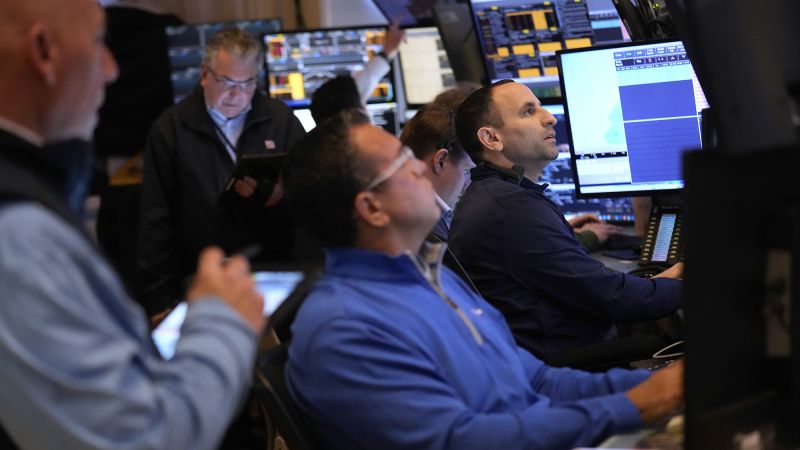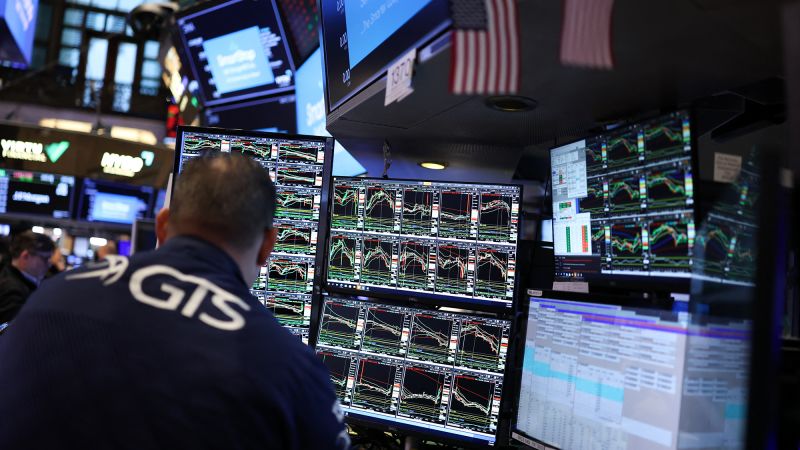Investors on Wall Street faced another tumultuous day on Thursday, as uncertainty surrounding President Donald Trump’s trade policies continued to impact market performance. With major fluctuations throughout the trading session, all three key indexes ended in the red, despite the president announcing a delay in tariffs on products from Mexico and Canada under the USMCA free trade agreement.
Market Overview and Key Index Performance
The trading day kicked off with a significant drop in US stocks, driven by mixed signals from the White House. Commerce Secretary Howard Lutnick hinted at a potential one-month delay for tariffs, yet the overall market sentiment remained pessimistic. By the end of the day:
- The Dow Jones Industrial Average fell by 428 points, a decrease of 0.99%.
- The broader S&P 500 index dropped 1.78%.
- The Nasdaq Composite plummeted by 2.61%, marking a correction phase, down 10% from its peak in December.
This week has proven challenging for the markets, with the Dow now down nearly 3%, on track for its worst week since March 2023. The S&P 500 and Nasdaq are facing their most significant declines since September 2024.
The Impact of Tariff Uncertainty
The ongoing uncertainty surrounding Trump’s trade strategies has cast a shadow over market performance. Since Trump took office, the Nasdaq has declined over 7%, while the S&P 500 has seen a drop of more than 4%. According to Rob Haworth, a senior investment strategist at US Bank Wealth Management, this uncertainty is weighing heavily on investor confidence.
“Eventually, that uncertainty is just going to weigh too much on business decisions and those forward prospects for earnings growth,” Haworth expressed.
Labor Market Concerns and Job Cuts
Another factor contributing to market anxiety is the latest job cut report from Challenger, Gray & Christmas, which revealed that US employers announced plans to eliminate 172,017 jobs last month. This figure represents a staggering 103% increase compared to January and marks the highest job cuts in February since 2009.
- Economic data highlights:
- 172,017 jobs cut in February
- 103% increase from January
- Highest February job cuts since 2009
Mixed Earnings in the Tech Sector
Futures for the Nasdaq 100 also dropped sharply, as companies in the artificial intelligence sector reported mixed earnings results. Notably, Marvell Technologies (MRVL) experienced a nearly 20% decline. Other tech giants like Nvidia (NVDA) and Palantir (PLTR) also faced downturns, contributing to the Nasdaq’s struggles.
In a surprising move, Alibaba, the Chinese tech powerhouse, unveiled its own AI model, posing a challenge to both DeepSeek and OpenAI and raising questions about the viability of the AI surge in the U.S.
Economic Outlook and Investor Sentiment
The downward trend on Thursday starkly contrasted with Wednesday’s rally, emphasizing the prevailing uncertainty regarding the trade conflict between the U.S. and its primary trading partners. Jeffrey Roach, chief economist at LPL Financial, warned that ongoing tariff-induced inflation amid stagnating growth could dangerously bring the U.S. economy close to stagflation.
The US dollar index, which assesses the dollar’s performance against six other currencies, fell to its lowest level since November, hinting at a weaker economic outlook.
Upcoming Economic Reports
Investors are gearing up for the Bureau of Labor Statistics’ monthly jobs report set to be released on Friday at 8:30 a.m. ET. This report could provide further insights into the state of the economy.
“If we see the hard data start to come in much weaker, that’ll become more and more concerning for the market,” Haworth noted.
The prevailing market sentiment has been characterized by “extreme fear,” as indicated by CNN’s Fear and Greed Index, suggesting that investors are feeling increasingly anxious about the future.
In summary, the week has been marked by volatility and uncertainty, with investors closely monitoring economic indicators and trade developments as they navigate the challenges ahead.











